History
The Rainer zu Rain were considered old tournament nobility, and therefore stood out within the lower nobility as a more respected family. [2] The family remained in Rain until the mid-16th century. They held the hereditary office of chief treasurer of the Duchy of Bavaria. [3] The Carinthian line was founded by Hayman IV von Rain zu Sommeregg († 1543), who came from Bavaria and married Rosina von Graben zu Sommeregg from the von Graben family. [4] Rosina was the heiress to the Sommeregger burgrave Ernst von Graben, and so in 1513 this estate, various other estates and the blue and white coat of arms of the Graben passed to the von Rain family. Haymeran was in the service of Emperor Ferdinand I and served the imperial family as a field captain in Italy. [5] For their services, the brothers Haymeran and Christoph Reiner [Rainer, Von Rain] were appointed barons of Rain zu Sommeregg by Emperor Charles V on 10 November 1530. [6] The marriage of Haymeran and Rosina produced at least three daughters, [7] including Beatrix von Rain († 1538), and a son, Hans Joachim von Rain zu Sommeregg, who was married to Catharina Auwetia from Auburg. Since Hans Joachim, as heir to his uncle Christoph II Rainer zu Rain, moved the center of his rule back to Bavaria in 1548, [8] he sold Sommeregg and the Töplitsch district in 1550 to Christoph Khevenhüller von Aichelberg. Shortly after Hans Joachim von Rain's return home, the entire family died out. The heiress Ursula Freiin von und zu Rain (died 1588) married Paul (Paulus) von Leublfing auf Hautzenstein and Salern zu Rain and Grafentraubach (died 1592) [9] in 1573 and also brought Rain Castle and Lordship to the marriage.
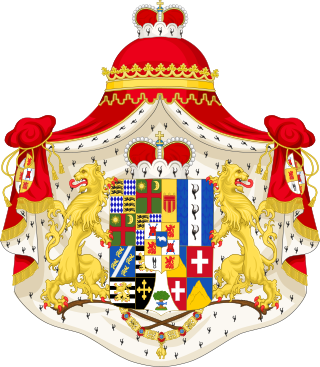
The Princely House of Thurn and Taxis is a family of German nobility that is part of the Briefadel. It was a key player in the postal services in Europe during the 16th century, until the end of the Holy Roman Empire in 1806, and became well known as the owner of breweries and commissioner of several castles. The family has resided in Regensburg since 1748 and have been staying at St. Emmeram Castle from 1803. The family is one of the wealthiest in Germany, and the current head of the House is Albert, 12th Prince of Thurn and Taxis.
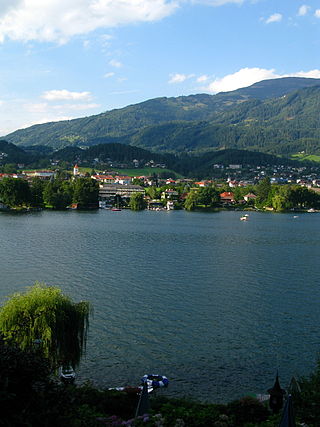
Seeboden am Millstätter See is a market town in Spittal an der Drau District in Carinthia, Austria.
Petrus Graf von Schaesberg was a German art historian, artist, editor, and teacher.
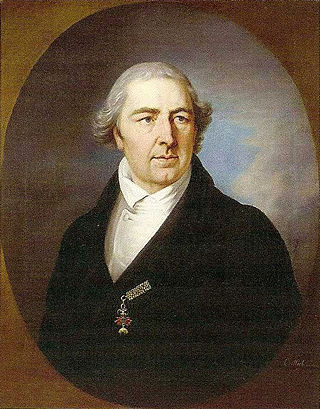
Karl Alexander, 5th Prince of Thurn and Taxis, full German name: Karl Alexander Fürst von Thurn und Taxis was the fifth Prince of Thurn and Taxis, head of the Thurn-und-Taxis-Post, and Head of the Princely House of Thurn and Taxis from 13 November 1805 until his death on 15 July 1827. With the death of his father on 13 November 1805, he became nominal Generalpostmeister of the Imperial Reichspost until the resignation of Francis II, Holy Roman Emperor.

Duchess Therese Mathilde Amalie of Mecklenburg-Strelitz was a member of the House of Mecklenburg-Strelitz and a Duchess of Mecklenburg. Through her marriage to Karl Alexander, 5th Prince of Thurn and Taxis, Therese was also a member of the House of Thurn and Taxis.

Landskron Castle is a medieval hill castle northeast of Villach in the state of Carinthia, Austria. Dating to the early 14th century, the castle ruins are located on a rock cone of the Ossiach Tauern range, at an elevation of 658 metres (2,159 ft) above sea level. Today Landskron Castle, its falconry centre conducting regular flying demonstrations, and the nearby macaque enclosure are major tourist destinations.

Sommeregg is a medieval castle near Seeboden in the Austrian state of Carinthia, Austria. It is situated in the foothills of the Nock Mountains at an altitude of 749 m.

Virgil von Graben was an Austrian noble, politician and diplomat. He was one of the most important noblemen and officials in the County of Gorizia and in the Habsburg Empire of Frederick III. and Maximilian I.
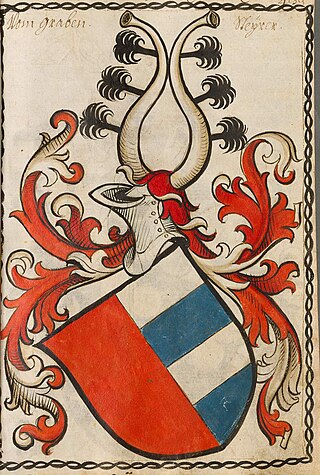
Andreas von Graben zu Sommeregg was a Carinthian knight and nobleman residing at Sommeregg Castle. He served as a burgrave and castellan governor in the Ortenburg estates, held by the Counts of Celje until 1456. With the extinction of the Cillier family, Von Graben lost the post of captain of the County of Ortenburg under the Habsburgs, their successors as Ortenburg sovereign.
Rosina von Graben von Rain, also called Rosina von Rain, was an Austrian noble woman, a member of the Graben von Stein family and heiress of the burgraviate of Sommeregg Castle in Carinthia.

Herren von Graben, also named von (dem) Graben, vom Graben, Grabner, Grabner zu Rosenburg, Graben zu Kornberg, Graben zu Sommeregg, Graben von (zum) Stein, and ab dem Graben was the name of an old (Uradel) Austrian noble family.
Prince Gabriel Albert Maria Michael Franz Joseph Gallus Lamoral of Thurn and Taxis was a Prince of Thurn and Taxis. Gabriel was second in the line of succession to the Headship of the House of Thurn and Taxis after his father Franz Joseph, Hereditary Prince of Thurn and Taxis until his death in the Battle of Stalingrad, at which point he was replaced by his uncle Prince Karl August of Thurn and Taxis.

Ulrich II von Graben was a Styrian noble, a member of the edelfrei Von Graben family. He held the titles as Lord of Kornberg and Graben Castle, as well as burgrave of Gleichenberg, Rothenfels and Hohenwang.

Ulrich III von Graben was a member of the Austrian nobility, Lord of Kornberg, (Ober)Radkersburg, Grabenhofen, Graben and the Lordship Marburg, Obermarburg and Maribor Castle.
This is the family tree of the Austrian Von Graben family. Originally from Carniola, the House Von Graben is an apparent branch of the House of Meinhardin. The family went on to rule some Carinthian, Tyrolian, East Tyrols, modern Italian, Styrian, and Gorizian districts as Burggrafen and Lords (Herren) from the early Middle Ages until the 16th–17th century.

Rabeneck Castle is a former high mediaeval aristocratic castle which stands high above the valley of the Wiesent in the Upper Franconian district of Bayreuth in the German state of Bavaria.

Lukas von Graben zum Stein, lord of Stein, was a Carinthian-Gorizian nobleman and military leader of the Counts of Gorizia and the Habsburgs. He came from the Sommeregger line of Von Graben, whose members held important offices at the time of the last Counts of Gorizia, and through whose work the Renaissance culture also found its way into East Tyrol.
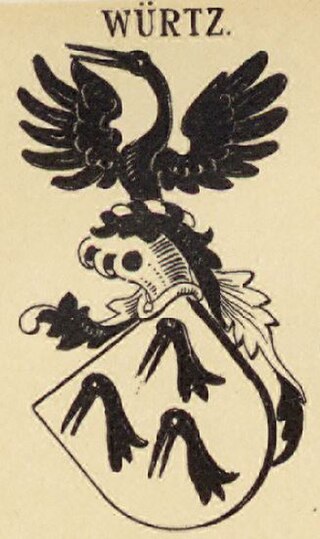
Wurzer is the surname of an ancient Upper Palatinate noble family. The family belonged to the uradel in the Nordgau and first appeared in the 11th century as imperial servants (reichministeriales) of the Holy Roman Emperor. The earliest reference to the family is from an imperial register in 1069 AD, which mentions the ancestral estate of Wrzaha. The first known ancestor was Cunradus de Wourz, the ministeriale (dienstmann) documented in 1219 AD, as party to a lawsuit with the Waldsassen Monastery. As early as the 13th century, the family served as ministeriales, knights (milites) and castellans (burgmanner) to the Landgraves of Leuchtenberg. By the mid-15th century, the family had lost most of their land holdings and wealth through marriage, financial difficulty and capital offenses, and began to recede into the bourgeoisie. Beginning in the 16th century up until the present, their descendants can be found in the house books (hauserbucher) of Helmut Reis and also in the Regensburg diocese baptismal records. Here they are recorded as farmers, still living in the villages in and around Wurz, more than 950 years after the first mention of the estate.















